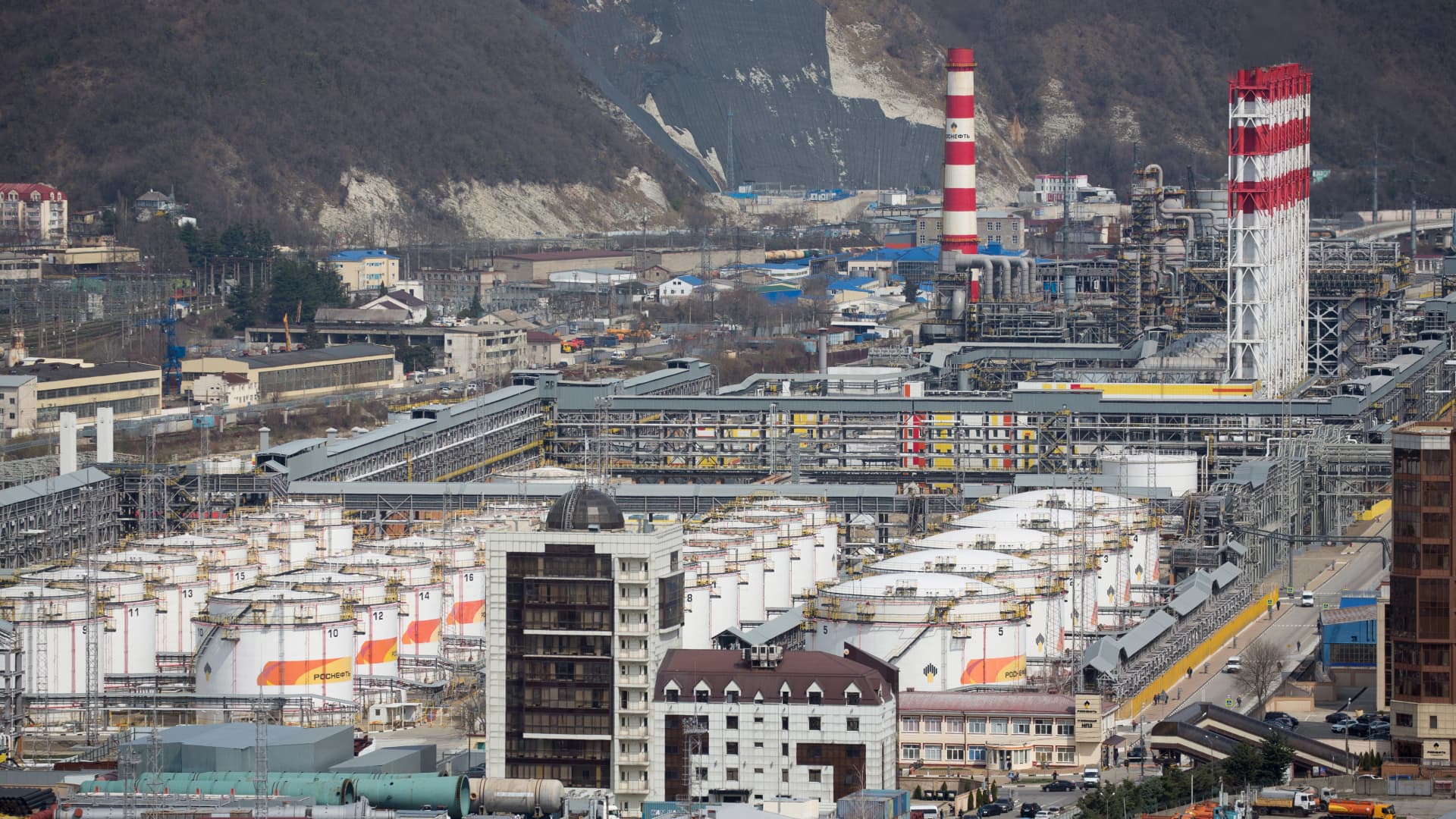The RN-Tuapsinsky refinery operated by Rosneft Oil Co. in Tuapse, Russia.
Andrey Rudakov | Bloomberg | Getty Images
Oil prices surged to their highest level in over a year during Asian trading hours, after crude stocks at a key storage hub fell to their lowest since July last year.
Crude inventories in Cushing, Oklahoma fell to 22 million barrels in the fourth week of September — hovering close to the operational minimum, according to data from the U.S. Energy Information Administration (EIA). That’s a drop of 943,000 barrels compared to the prior week.
The U.S. West Texas Intermediate futures touched $95.03 per barrel during Asia trading hours, marking the highest since August 2022. It was last trading at $94.61 per barrel. Global benchmark Brent rose 1.05% to $97.56 a barrel.
“Today’s price action seems to be Cushing driven, as it reaches a 22 million bbl low, the lowest level since July 2022,” Bart Melek, managing director of TD Securities, told CNBC.
If the inventories continue to dip below those levels, it’s going to be “rough” getting crude out into the market, Melek said on CNBC’s “Street Signs Asia.”
He forecasts that oil prices will continue to remain at “high level” for the rest of the year, with an upside risk if global oil cartel OPEC+ continues to keep supplies tight.
‘Robust deficit’ in sights
The global oil markets are looking at a “pretty robust deficit” on top of an already significant shortfall this quarter, Malek said, citing the oil production cuts implemented by OPEC and its allies.
In September, OPEC+ kingpin Saudi Arabia extended its 1 million barrel per day voluntary crude oil production cut until the end of the year. It brings Saudi’s crude output to near 9 million barrels per day.
We do think that prices could keep up near these levels for quite some time. But I don’t think it’s too permanent. And we might have seen the end of this rally.
Bart Melek
managing director, TD Securities
Russia has also pledged to extend its 300,000 barrels per day export reduction until the end of December.
Malek also highlighted how refinery throughputs will see a decline in the coming months as refinery maintenance season approaches. The refinery crude throughput refers to the volume of crude oil a refinery can produce during a given period of time.
“We do think that prices could keep up near these levels for quite some time. But I don’t think it’s too permanent. And we might have seen the end of this rally.”
It will not be in OPEC’s interest if prices go a lot higher to triple digits, as they will be worried about long term demand destruction, Malek pointed out.
“We do think they will ultimately signal, as we get closer to the end of the year, that they may be very well done with these strong measures to limit supply,” he projected.
Forecasts for $100 per barrel oil have been swirling on the horizon in recent days. Goldman Sachs recently raised its 12-month Brent forecast from $93 per barrel to $100 on the back of “modestly sharper inventory draws,” the investment bank wrote in a recent note dated September 20.
“Overall, we believe that OPEC will be able to sustain Brent in an $80 to $105 range in 2024,” the Goldman report added, citing strong demand growth from the Asia region.
This story originally appeared on CNBC

